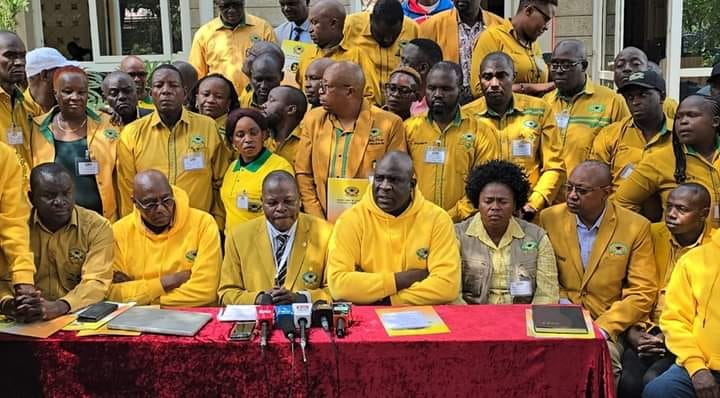A crisis is on the horizon as schools grapple with a shortage of 100,000 teachers.
A recently released report on the state of education in Kenya has highlighted significant challenges that threaten learning outcomes nationwide.
Key issues include a critical lack of teachers and inadequate basic infrastructure, such as toilets, laboratories, and classrooms, which adversely affect thousands of students every day.
Despite the government’s annual investment of billions of shillings in the education sector, the situation on the ground remains concerning.
The report from Usawa Agenda and Zizi Afrique reveals an overstretched education system, with a teacher shortfall exceeding 100,000 across all levels, from early childhood education to technical institutions.
The findings indicate that Junior Secondary Schools and secondary schools face the most significant deficits. Only 18,378 junior school teachers have been assigned, compared to an ideal staffing level of 83,899. Similarly, 24,569 secondary school teachers have been appointed, while the requirement stands at 188,378. Technical training colleges are short 672 teachers, whereas primary schools are overstaffed by 18,194 teachers.
With just a few months left before Grade 9 students transition to senior schools, the report reveals that 1,600 schools lack laboratories, a crucial element of the competency-based curriculum.
“At the national level, we only have 33.9% of the schools currently offering computer studies. That means these are the only schools ready to offer the new curriculum, where Computer Studies is now a compulsory area,” said Dr. Emmanuel Manyasa, the executive director of Usawa Agenda.
“Out of these 33.9%, 92.9% are actually cluster 1 former national schools, and only 17% are cluster 4, former sub-county schools.”
Apart from laboratories and a shortage of classrooms, the report highlights a worrying trend: more than twice the recommended number of learners are being forced to share a single toilet.
The national average stands at 66 boys and 62 girls per toilet, way above the Ministry of Education’s recommended ratio of 30 boys and 25 girls per toilet.
“During break time, all these kids want to use the toilet and come back to class. When you have 66 of them sharing one toilet, it means some won’t get the chance, or they’ll return late from break — and that has consequences,” Dr. Manyasa added.
But the Principal Secretary at the Ministry of Education, Amb. Prof. Julius Bitok, was quick to dismiss some of the statistics, particularly those on the pupil-teacher ratio.
He insisted that government records show 434,000 teachers have been hired to serve 1.2 million learners, arguing the gap is not as wide and will narrow by 2027, with more teachers to be hired this financial year.
“434,000 teachers have been hired by the government, so you get 1:29. The global UNESCO recommended student-teacher ratio for secondary schools is 1:35. For primary, or what we’re now calling comprehensive school, it is 1:25,” he pointed out.
According to the PS, the ministry has already mapped the 1,600 schools that lack laboratories, and construction is set to begin within three months, with a promise that by January, all public schools will be ready for the Grade 9 transition to senior schools.
